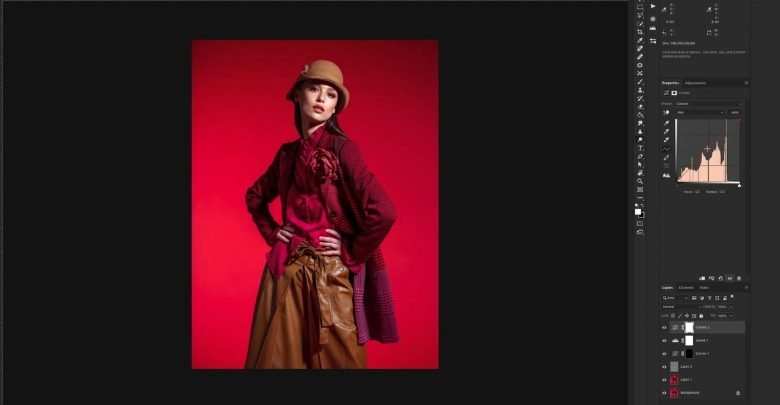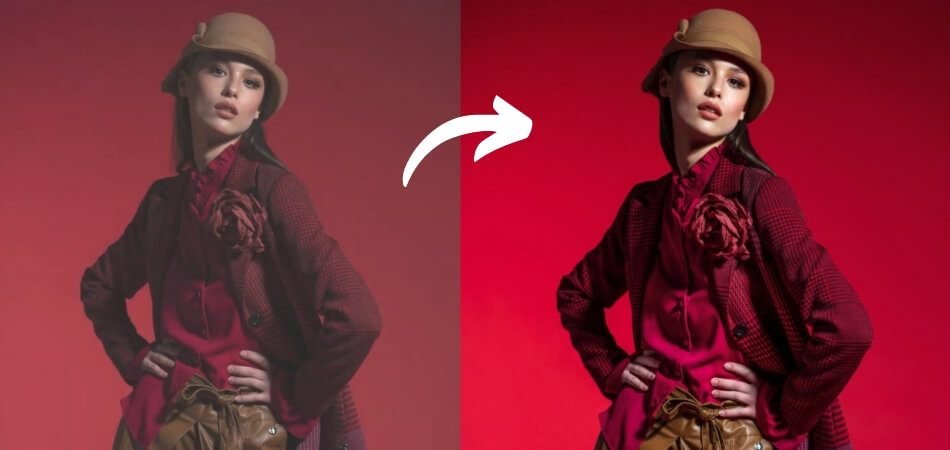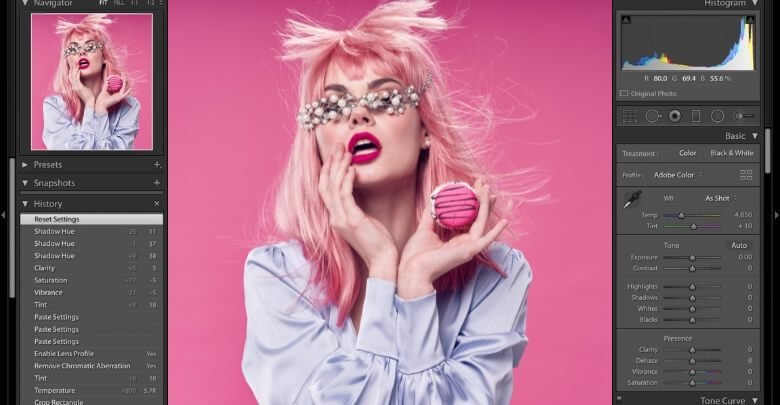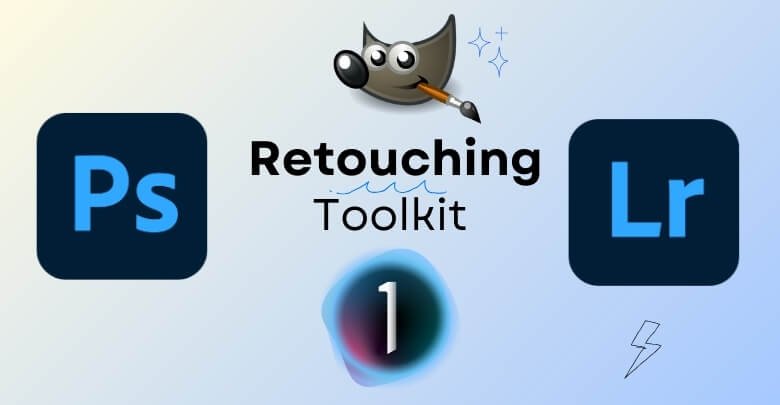The fashion industry, where aesthetic appeal and visual perfection are paramount, has made retouching an indispensable part of the photographic process. As technology advances and industry standards evolve, fashion photographers continually adapt their retouching techniques to meet the ever-growing demand for flawless imagery.
These enhancements contribute to photos’ artistic quality but also align with fashion consumers’ dynamic expectations. Consequently, do fashion photographers retouch their photos?
Yes, they often do, employing various techniques to adjust lighting, color balance, and composition, while meticulously correcting skin imperfections. The idea is to create the idealized images we see in magazines and ads.
This process can vary greatly in time, taking anywhere from a half-hour to several hours per image depending on its complexity. Continue reading to discover more about the transformative art of photo retouching in the fashion realm.
Fashion Photography Retouch: Is it Necessary?
The necessity of retouching fashion photography is fascinating to study. Fashion photography is not just about capturing clothing but also about conveying aesthetics or fantasy.

Retouching serves as a crucial tool in this regard. It’s not just about perfecting models’ appearances; it’s also about enhancing the overall mood and impact of the image. Colors become more vibrant, and fabric textures are accentuated, bringing the designer’s vision closer to reality.
Moreover, when it comes to accessories like jewelry, precision is paramount. Utilizing reliable affordable fashion photo retouching services can make a difference. These experts fine-tune the smallest details, ensuring that each piece looks exquisite and captures the viewer’s attention.
Hence, retouching in fashion photography is a necessity, since it bridges the gap between raw capture and the final vision of the creator. It’s an essential step to ensure every element looks its most spectacular.
Do Fashion Photographers Retouch Their Photos?
When you flip through a fashion magazine or browse an online catalog, the striking images that catch your eye are often the result of not just a photographer’s skill but also post-production magic. In other words, do fashion photographers retouch their photos?

Yes, it is. Retouching is a fundamental step in fashion photography, subtly enhancing photos to align with artistic visions and industry standards. Enhancements can range from simple tweaks to complex alterations, all aimed at producing visually appealing outputs. Here are the related factors briefly described.
Importance of Lighting Adjustments
One of the primary things to do in photo retouching involves adjusting lighting. This is crucial because proper lighting can dramatically alter the mood and quality of a photo.
Retouchers work to balance shadows and highlights, ensuring that the lighting complements the subject without overpowering it. Such adjustments help emphasize the textures and details of the clothing, which might otherwise go unnoticed.
Moreover, lighting tweaks are essential in creating a consistent look across a series of photos, maintaining a uniform tone that reflects the brand’s identity.
Color Correction and Consistency
Color plays a significant role in conveying fashion shoot mood and style. Retouchers spend considerable time correcting colors to make them true to life and consistent across all images.
In addition to adjusting the saturation and hues, the skin tones of the models must look natural yet polished. It’s not merely about making the images vibrant; it’s also about preserving the fashion designer’s integrity and palette.
A color adjustment ensures that the garments look as appealing and true to their original color as possible by adjusting the colors of the garments.
Detail Enhancement
Fashion photography retouching also involves detailed improvement. This process focuses on the finer details such as the texture of the fabric, the intricate work on accessories, and the sharpness of the image.
Retouchers carefully refine these elements to make the image more compelling and luxurious. These modifications help the photos tell a more powerful story, showcasing the craftsmanship behind a garment or accessory.
It’s about making sure that every stitch and embellishment is visible and appreciated, enhancing the overall appeal of fashion items.
Skin Retouching
Furthermore, skin retouching is standard practice in fashion. Retouchers smooth out imperfections while preserving the natural texture of the skin to avoid an overly plastic look.
A model’s makeup is also made more appealing by adjusting contrast and brightness to highlight her features. This careful balance ensures that the model looks attractive without overshadowing the fashion pieces it showcases.
Proper skin retouching can significantly impact the final output, making it more polished and marketable.
Ultimately, retouching is not about changing images; it is about refining a photographer’s vision. It helps upgrade fashion photos’ look through retouching, subtly yet significantly improving their artistic quality. Professionals and consumers will be satisfied.
How Fashion Photographers Approach Retouching?
When you think about fashion photography, what you see in magazines and advertisements is often the polished end product of a meticulous editing process. Fashion photographers approach retouching with technical skill and artistic vision.

To capture their creative intent, they aim to transform raw photos into stunning visuals. Here’s how they do it.
Step 1: Initial Assessment
Every retouching session starts with an initial assessment. Photographers and retouchers review raw images to identify areas for development. They consider factors like lighting, composition, and the overall mood they want to convey. This step is crucial because it sets the direction for the type of adjustments made.
Step 2: Detail Enhancement
Enhancing details is a key focus during retouching. Retouchers zoom in to work on fabric textures, intricate details on accessories, and even the sharpness of the image. As a result, every element is vivid and distinct, which is essential for displaying the quality and style of fashion items.
Step 3: Color and Tone Adjustment
Adjusting color and tone is essential for consistency and vibrancy in fashion photos. Retouchers manipulate colors to reflect the true hues of the clothing and set the right mood for the shoot. The goal is to maintain a balance that amplifies the overall visual appeal without overpowering the photograph’s natural elements.
Through these steps, fashion photographers ensure that their images are beautiful and true representations of their artistic vision.
A Retoucher’s Toolkit: Software and Techniques
A retoucher’s skill set is based on a sophisticated array of tools and techniques that he uses to bring images to life. Whether it’s enhancing the texture of a fabric or perfecting the skin of a model, the right tools are essential. Here’s a brief look at a retoucher’s toolkit.

- Adobe Photoshop: The industry standard for photo editing, offering extensive features for complex retouching.
- Adobe Lightroom: Preferred for color correction and managing large batches of photos efficiently.
- Capture One: Known for its superior color editing capabilities and detailed image sharpening.
- GIMP: A free, open-source alternative to Photoshop with a wide range of tools.
- Frequency Separation: A technique for separating texture and tone for precise editing.
- Dodge and Burn: Used to lighten (dodge) or darken (burn) specific areas of the image to add depth.
- Healing Brush: Perfect for removing blemishes and imperfections without affecting the texture.
- Liquify Tool: Allows subtle reshaping and adjusting of photo elements.
Each tool and technique has its place, and mastering them can significantly reinforce fashion photography quality and impact. Retouchers choose their tools based on the specific needs of each project, ensuring every image testifies to their technical skill and creative vision.
FAQs About Do Fashion Photographers Retouch Their Photos?
In fashion photography, retouching is an essential element, blending technical skill with creative vision to strengthen images’ visual impact. Here’s a deeper look at some frequently asked questions about this process.
Should Photographers Edit Their Photos?
Image editing is crucial in professional photography. It allows photographers to refine their work and ensure that the final product aligns with their artistic vision and meets client expectations.
Is it Ethical to Retouch Photos?
Photo retouching straddles artistic and ethical boundaries. While it’s a valuable tool for enhancing images, it’s imperative to maintain authenticity, especially in contexts where realism is critical.
What is Fashion Retouching?
Fashion retouching involves enhancing and perfecting fashion photographs to create visually stunning and flawless images. This includes everything from skin smoothing to adjusting garment color and texture.
How Does Retouching Affect Brand Perception?
Retouching can significantly influence brand perception. High-quality, polished images attract more attention and portray the brand as high-end and detail-oriented.
What Techniques Are Common in Fashion Retouching?
Common techniques include skin retouching, color correction, background editing, and lighting adjustment. Each technique is applied to bring out the best in the photograph.
Can Over-Retouching Harm Photo Credibility?
Yes, over-retouching can make images look unrealistic and detract from the credibility of the photo and the photographer, especially if the alterations are noticeable.
What Should Photographers Consider Before Retouching?
Photographers should consider the purpose of the photo, the expectations of their clients, and the ethical implications of their edits. Clear communication about the retouching extent can prevent misunderstandings.
How Can Photographers Balance Authenticity with Retouching?
Photographers can balance authenticity with retouching by keeping alterations minimal and focused on enhancing the natural beauty of the subject. Without altering fundamentals.
These FAQs explore the complexities of photo retouching in fashion photography, highlighting both its necessity and careful consideration.
Final Verdict
The importance of retouching in fashion photography is evident throughout our discussion. So, when you ask, “Do fashion photographers retouch their photos?” yes, they do. This process heightens everything from lighting and color balance to fine details and skin textures.
In this way, each image perfectly captures its intended aesthetic and quality. For photographers looking to refine their retouching process, it’s crucial to invest in reliable software like Adobe Photoshop.
Mastering techniques like frequency separation and dodge-and-burn is also crucial. These tools and methods will help photographers improve their work, ensuring each photo is both beautiful and professionally polished.